Homemade Pumpkin Purée
I was never a fan of winter squash growing up. I can’t really explain why. But 2 years ago, I was asked by a friend to teach a little class on pumpkin recipes for a group of women at my church, and I was apprehensive but accepted the challenge. I hadn’t really considered that there was a whole lot more to those Autumnal flavors than pumpkin pie and overly brown-sugared butternut squash. But as I researched and experimented, I discovered a whole world of varieties and flavors beyond the tried and true cinnamon, clove, ginger, and nutmeg combo and was completely smitten.
I came up with a few recipes to share that night, but all of it, save one recipe, came down to one very important but easy peasy skill: making your own purée. There are different ways to do it, but I learned from trial and error that roasting the squash resulted in the most consistent texture and moisture content and was the most deeply flavorful.
The other great nugget of wisdom I gathered was that, whenever possible, it’s best to cut through the equator.
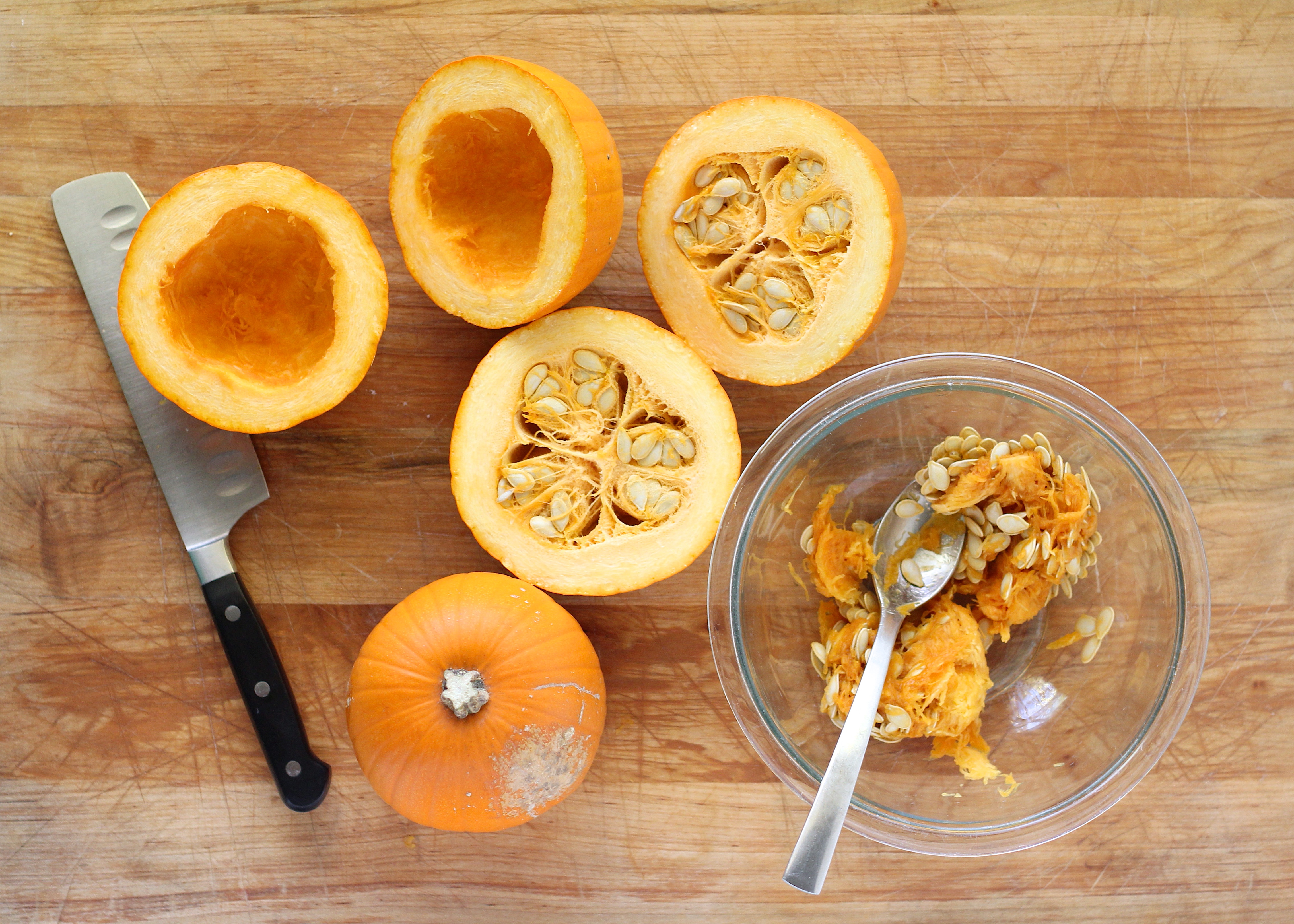 For a squat squash like kabocha, that can be challenging and near impossible, so it’s best to cut pole-to-pole. I do that by holding it firmly on the flat cutting surface with my left hand, and with a sharp knife, cutting from the side of the stem to the outside. Then, rotating the squash 180° and holding the cut side firmly against the flat cutting surface, place the tip of your knife at the end of the cut mark and slice through the stem to the other end.
For a squat squash like kabocha, that can be challenging and near impossible, so it’s best to cut pole-to-pole. I do that by holding it firmly on the flat cutting surface with my left hand, and with a sharp knife, cutting from the side of the stem to the outside. Then, rotating the squash 180° and holding the cut side firmly against the flat cutting surface, place the tip of your knife at the end of the cut mark and slice through the stem to the other end.
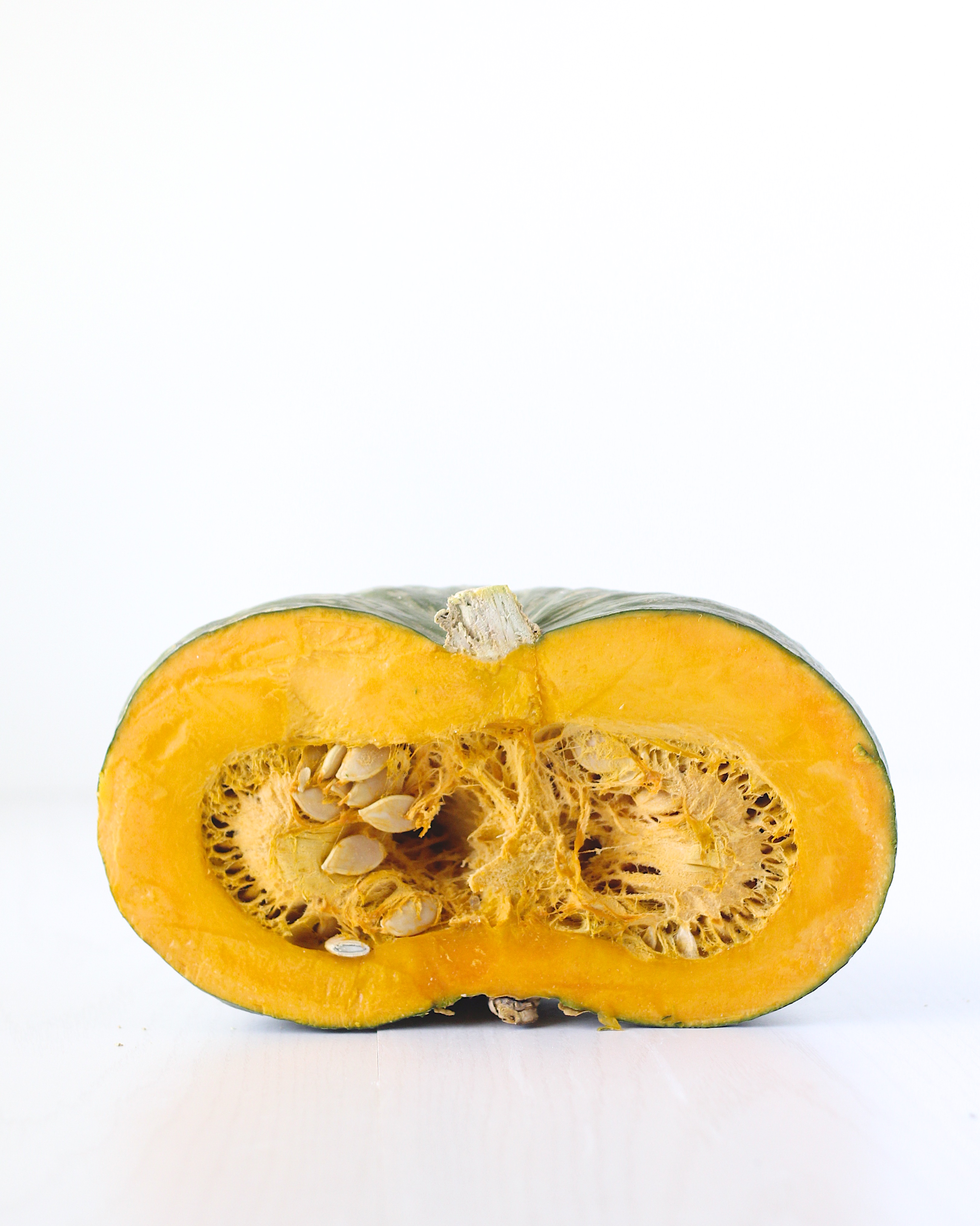 The reason I like to cut through the equator is two-fold: 1. you get to avoid the stem, which can be tough and brittle. It’s dangerous to cut through that thing! And 2. scooping out the seeds and pith is so much easier! See, just like on the outside of the squash, the inside has ridges. And if you slide your spoon around those ridges, you end up with segments, almost like a grapefruit. I like to kind of score those segments, gently separating it from the flesh by following along with the shape of my spoon.
The reason I like to cut through the equator is two-fold: 1. you get to avoid the stem, which can be tough and brittle. It’s dangerous to cut through that thing! And 2. scooping out the seeds and pith is so much easier! See, just like on the outside of the squash, the inside has ridges. And if you slide your spoon around those ridges, you end up with segments, almost like a grapefruit. I like to kind of score those segments, gently separating it from the flesh by following along with the shape of my spoon.
Once you can get a feel for where the seeds end and the flesh begins, it’s a whole lot easier to scoop cleanly. Then you place those on a rimmed, lined baking sheet, cut-side down, and roast at 350°F. Keep like-size squash on the same pan. The amount of time depends on the size of your squash. Anywhere from 45 to 75 minutes. Possibly longer for really large squash. You’ll know it’s done when you pierce it with a fork and meet no resistance.
The skin gets a little warped like it just lost a bunch of weight (… because it did) and your house will smell amazingly fall-ish. Once they’re cool enough to handle, scoop out the flesh, and either run it through a food mill or a food processor. I like using the food mill because I can involve my kids and there’s just something therapeutic about the slow process of turning the crank. But maybe I’m the only crazy person that thinks that.
This purée freezes and thaws beautifully so make a bunch and freeze for later use. You can sub for any recipe that calls for canned pumpkin. Just remember if it calls for 1 15 oz can of canned pumpkin, that’s about 2 cups of homemade purée. I just fill wide mouth pint size jars, put on a lid, and put them right into the freezer. I take it out to thaw a few hours before I need it.
Try experimenting with different squash for your favorite consistency. Afterall, the canned stuff you buy isn’t 100% what you think it is anyway. I prefer the flavor and texture of kabocha over your standard pie pumpkin. It’s thicker, richer, and sweeter, with a nuttier flavor. And a lot less wet. Pie pumpkins have a lighter flavor and color. Whatever you choose, have fun with it, and come back because I have great, wholesome ways to use it coming soon.


- 1 or 2 pie pumpkins or other winter squash
- Preheat the oven to 350°F, and line a rimmed baking sheet with parchment paper.
- Cut the pumpkin in half. If the shape allows, but through the equator. If it's not a round squash, cut from pole-to-pole, but be careful cutting through the stem.
- Using a metal spoon, carefully separate the seeds and pith from the flesh. Once you get a feel for where the seeds end and the flesh begins, carefully scrape out the seeds, keeping as much flesh as possible.
- Place on the prepared baking sheet, cut-side down. Place in the oven and roast for 45-60 minutes, longer if using a larger squash, until a fork pierced through the skin and into the flesh meets no resistance.
- Once cooled enough to handle, scoop the flesh out with a spoon and place in the bowl of a food mill or food processor. Process until a fine, even purée is made.
- Use in place of canned pumpkin in recipes, using 2 cups of homemade in place of a 15 oz can.
- This purée freezes and thaw beautifully, so make extra and store in the freezer in 1 or 2 cup portions to use later on.
Ball Wide Mouth 16 oz Mason Jar
Ball Wide Mouth Plastic Storage Lids
Comments
- Pumpkin Coconut Curry - Scratch Eats - […] time I showed you how to make your pumpkin purée, which will work wonderfully in your usual pumpkin pie,…
- Sourdough Kabocha and Black Sesame Babka - Scratch Eats - […] (though I didn’t use it for the bread) and smooth, naturally sweet flesh. It’s easy to roast and make…




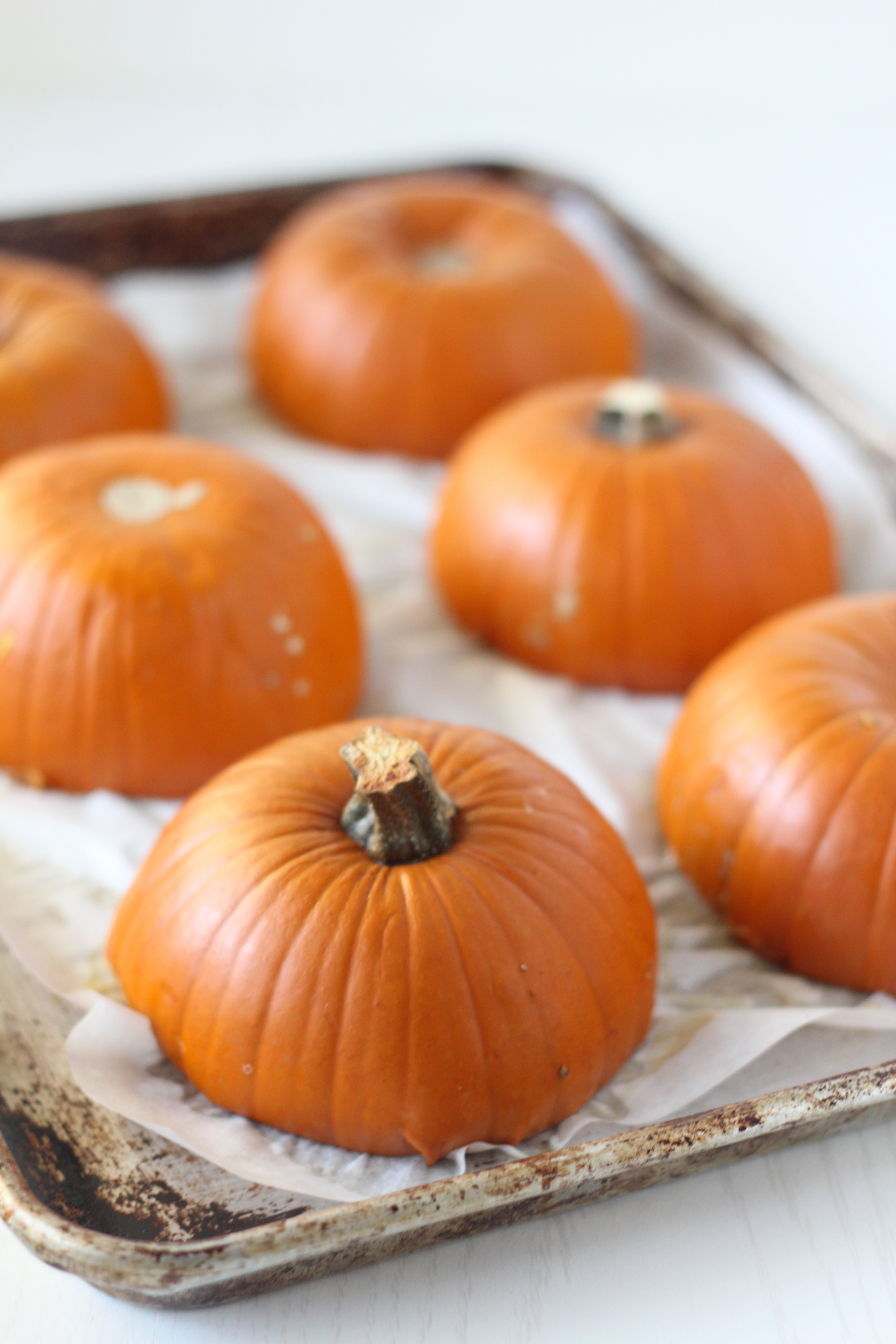
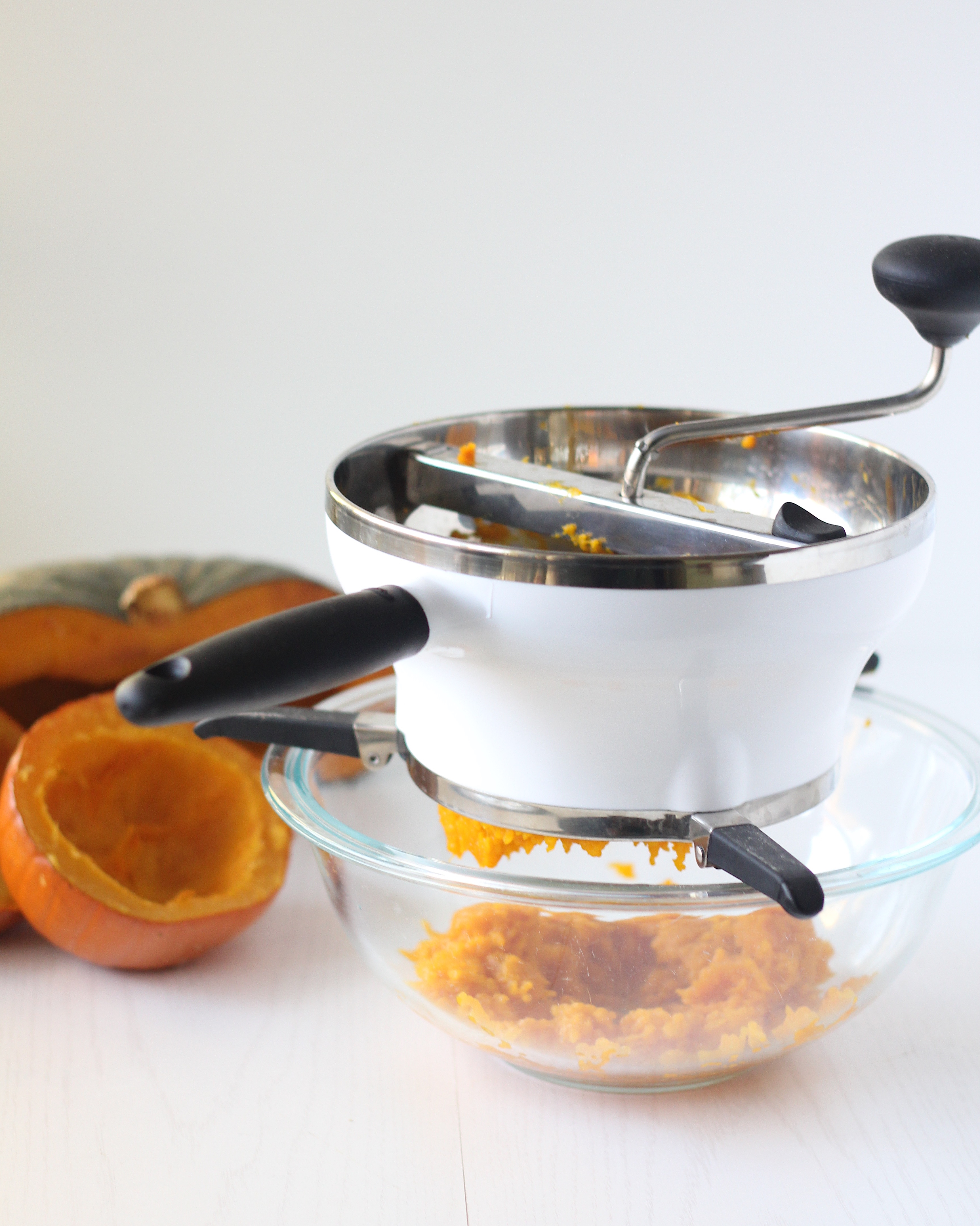

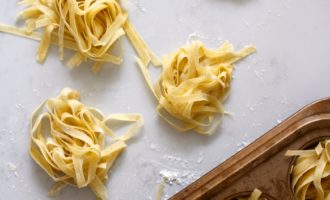
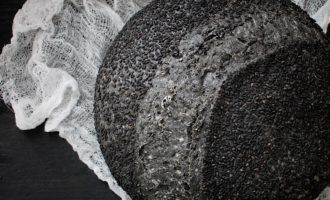
Jill
October 27, 2015
Ok nature is amazing, the seeds photos are stunning, I love how bright and beautiful you’ve captured it. And again you have me sold on trying making my own purée. I will report back. (Also I sometimes daydream about that curry you made, and the cinnamon rolls you made are a literal craving).
Lillian
October 31, 2015
Oh, Jill. I adore you. Move back and I’ll make you as many batches of pumpkin cinnamon rolls with browned butter cream cheese frosting as you want. Enjoy making pumpkin puree and yes, please tell me how it goes!
giubbotti moncler a 100 euro
December 10, 2015
Thanks very interesting blog!
Lillian
December 13, 2015
Thank you!